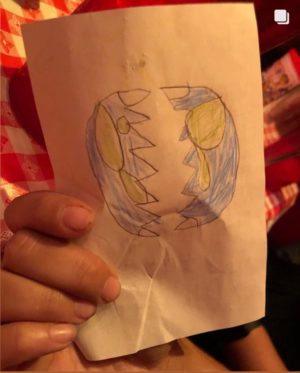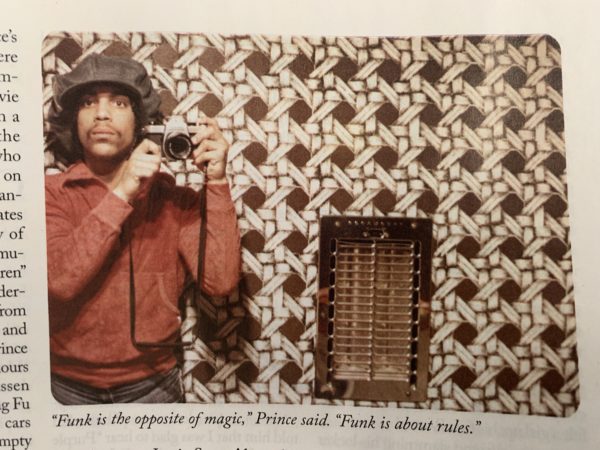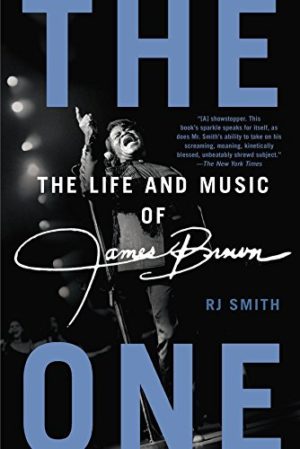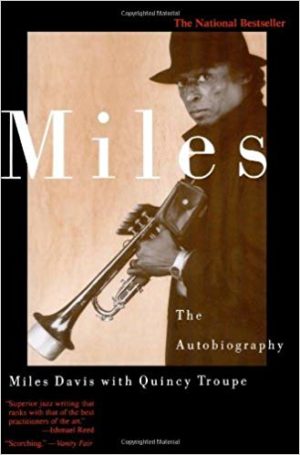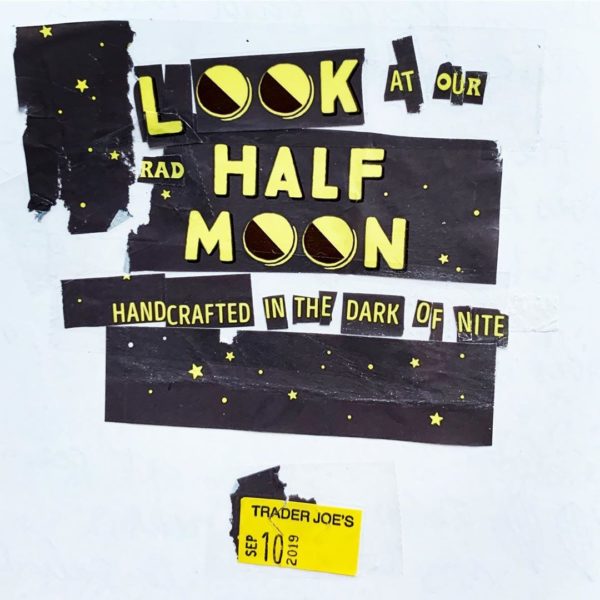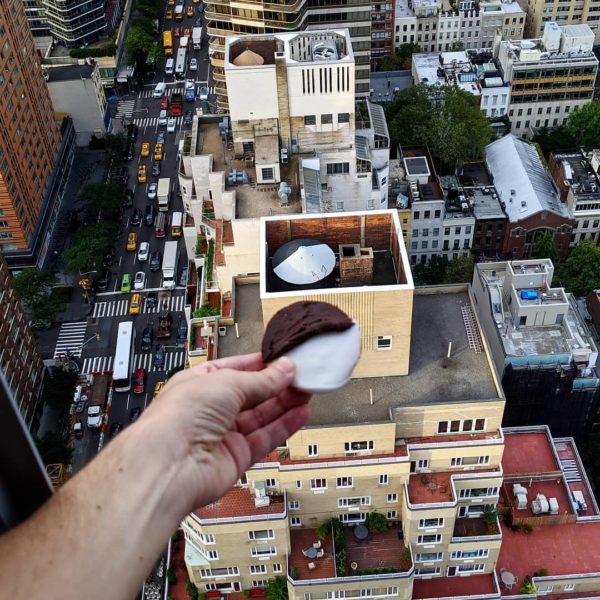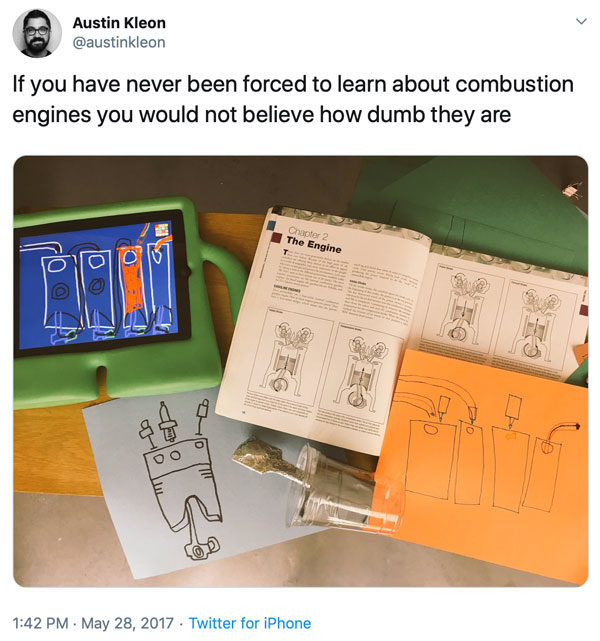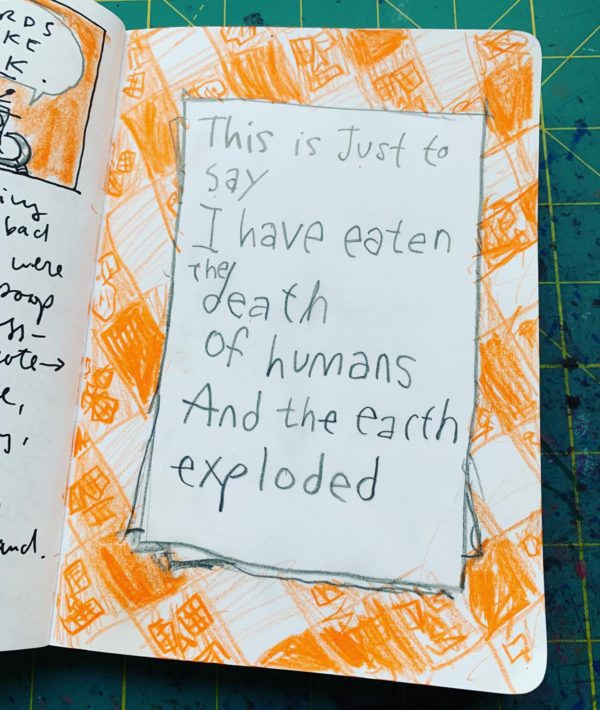

I love copying my kids’ drawings and writings into my diary. Copying seems like a mindless activity when you first start out, but by the time you’ve finished your copy, you usually learn something about the thing you’re copying and/or you discover something of your own.
The first grader wrote this poem last night at the pizza joint. (He and his brother have been watching the poetry episode of Classical Baby and reciting WCW’s “This is Just to Say.”)
While I copied the poem, I noticed how he writes his lowercase a’s and how he forms the letters starting from the bottom. I thought about Emily Dickinson’s envelope poems and about how the size of the paper we write on affects what we write. I thought about how quickly kids move towards parody with their own work, and how here I was, again, making a copy of a copy.
When I copied the tablecloth, I noticed that the original pattern could become a skull or some kind of death mask.
When I copied the exploding earth, I wondered what was with the teeth, until I realized they were exploded parts of the poles.
Copying is a way of paying closer attention.
Side note: I find it interesting how whenever I post something “dark” that my kids make, strangers assume that they’re “dark” kids. They’re actually quite cheerful kids… it’s called “imagination,” man!

